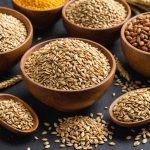In today’s fast-paced world, maintaining energy levels throughout the day can be a challenge. Many of us rely on snacks to bridge the gap between meals, yet not all snacks are created equal. The right snack can provide sustained energy, keep you focused, and help you avoid the dreaded energy crash that often follows sugary or processed options. This article will guide you on how to ensure your snacks are balanced for maximum energy. We’ll explore what constitutes a balanced snack, the key nutrients to include, and practical tips for making smarter snacking choices.
Understanding Balanced Snacks
To create a snack that supports sustained energy, it’s essential to understand what a balanced snack truly means. Balanced snacks typically combine macronutrients: carbohydrates, proteins, and fats. Each of these nutrients plays a significant role in fueling your body and maintaining energy levels.
Topic to read : What are the best practices for mindful grocery shopping to support slimness?
Carbohydrates are your body’s primary energy source. They are broken down into glucose, which powers your cells. However, not all carbohydrates are equal. Focus on complex carbohydrates like whole grains, fruits, and vegetables. These options provide a slow and steady release of energy, unlike simple carbohydrates found in sugary snacks that can lead to a quick spike and subsequent crash.
Proteins are vital for energy maintenance and muscle repair. Including protein in your snacks can help you feel fuller for longer and reduce the likelihood of reaching for another snack too soon. Great snack options include Greek yogurt, nuts, or hummus.
Also to discover : How can I get creative with whole grains to promote a healthy diet?
Fats are also crucial, particularly healthy fats like those found in avocados, nuts, and seeds. They provide a concentrated source of energy and can help slow digestion, leading to more sustained energy release.
In summary, a balanced snack should include a mix of carbohydrates, protein, and healthy fats. By understanding these components, you can make informed choices that support your energy needs throughout the day.
Key Nutrients for Sustained Energy
When planning your snacks, focus on incorporating specific nutrients that are known to promote sustained energy levels. Let’s break down these essential nutrients.
First and foremost, fiber is a game changer. It helps slow the digestion of carbohydrates, leading to a more gradual release of energy. Foods high in fiber include fruits, vegetables, nuts, and whole grains. For example, pairing an apple (rich in fiber) with peanut butter (which provides protein and healthy fats) creates a satisfying snack that keeps you energized.
Next, consider B vitamins. These vitamins are integral in converting food into energy. Whole grains, leafy greens, and legumes are excellent sources of B vitamins. When you snack on whole grain crackers with cheese, you’re not only enjoying a tasty treat but also fueling your body with energy-enhancing nutrients.
Another nutrient worthy of attention is magnesium. This mineral plays a key role in energy production and muscle function. Foods rich in magnesium include nuts, seeds, and dark chocolate. A small handful of almonds or a few squares of dark chocolate can make for a delicious and energizing snack.
Lastly, don’t overlook hydration. Dehydration can lead to fatigue and reduced concentration. Drinking water or incorporating hydrating snacks like cucumbers or watermelon can help you stay energized and focused.
By ensuring that your snacks are rich in fiber, B vitamins, magnesium, and hydration, you create a powerful arsenal for maintaining your energy levels throughout the day.
Smart Snacking Strategies
Now that you understand the components of balanced snacks and the nutrients that support sustained energy, let’s dive into some practical snacking strategies you can implement.
One effective approach is prepping snacks in advance. By planning your snacks for the week, you can ensure you have healthy options readily available. Consider setting aside time every Sunday to prepare snack bags of mixed nuts, cut-up vegetables, or portioned servings of yogurt. This not only saves time during busy days but also helps avoid impulse snacking on unhealthy options.
Another strategy is to create snack combinations. Pairing foods can enhance the nutritional value of your snacks. For instance, combine cottage cheese with pineapple for a delightful mix of protein and carbohydrates. Alternatively, try whole grain toast topped with avocado and cherry tomatoes. These combinations provide a balance of nutrients that will keep you full and energized.
Mindful eating is also crucial. Taking time to enjoy your snacks can help you better recognize hunger cues and prevent overeating. Focus on your food, chew slowly, and appreciate the flavors and textures. This approach not only enhances your snacking experience but can also contribute to better digestion and satisfaction after your meal.
Lastly, be aware of portion sizes. It’s easy to overindulge, especially with snacks that are calorie-dense. Use smaller bowls or plates to help control portions and avoid mindless munching.
Implementing these smart snacking strategies will not only improve the quality of your snacks but also contribute to a more balanced and energized lifestyle.
Healthy Snack Ideas
To help you get started on your journey toward balanced snacking, here are some healthy snack ideas that incorporate the principles we’ve discussed.
-
Greek Yogurt Parfait: Layer Greek yogurt with mixed berries and a sprinkle of granola. This snack is rich in protein and antioxidants, providing a delicious and energizing treat.
-
Nut Butter and Apple Slices: Slice an apple and spread your favorite nut butter on top. This classic combination offers fiber, protein, and healthy fats for sustained energy.
-
Veggies and Hummus: Carrot sticks, cucumber slices, or bell pepper strips paired with hummus create a crunchy and satisfying snack loaded with fiber and protein.
-
Trail Mix: Create your own trail mix with nuts, seeds, and dried fruit. This portable snack is perfect for on-the-go and provides a balanced mix of carbohydrates, fats, and proteins.
-
Avocado Toast: Spread mashed avocado on whole grain toast and top with cherry tomatoes or a poached egg. This snack is not only filling but also provides healthy fats and fiber.
-
Rice Cakes with Peanut Butter: Spread peanut butter on rice cakes and add banana slices or chia seeds for added nutrition. This snack is light yet energizing.
-
Cottage Cheese with Fruit: Cottage cheese paired with pineapple, peaches, or berries offers a great source of protein and vitamins.
By incorporating these healthy snack ideas into your daily routine, you can ensure that you are consuming balanced snacks that support sustained energy and overall health.
Achieving sustained energy through your snacks is entirely possible with the right knowledge and strategies. By understanding what constitutes a balanced snack and focusing on key nutrients, you can make informed choices that keep your energy levels steady throughout the day. Remember to prep your snacks in advance, create nutritious combinations, practice mindful eating, and be conscious of portion sizes.
With the healthy snack ideas provided, you now have a toolkit to begin transforming your snacking habits. Prioritizing balanced snacks not only enhances your energy but can also improve your overall health and productivity. Start implementing these strategies today, and enjoy the benefits of sustained energy that comes with thoughtful snacking.











